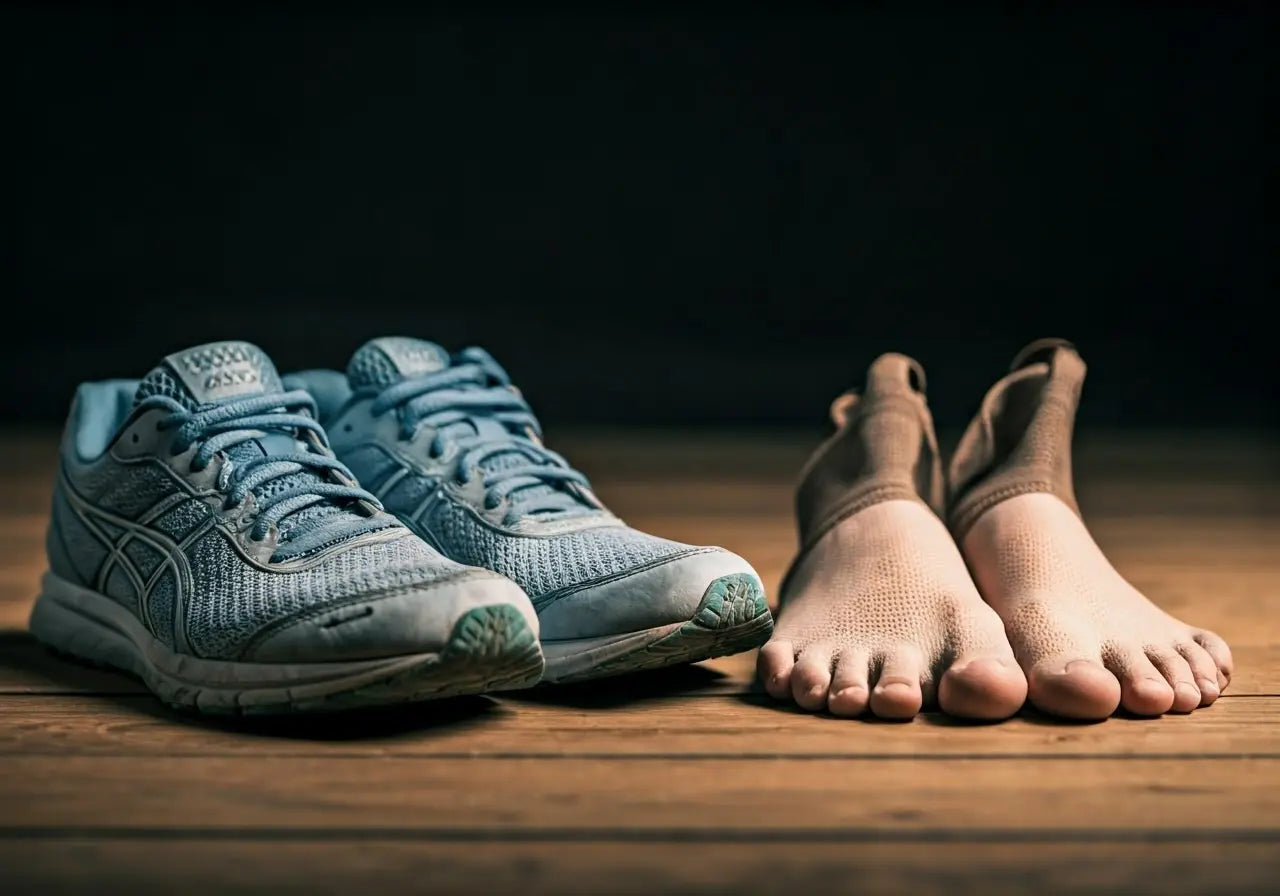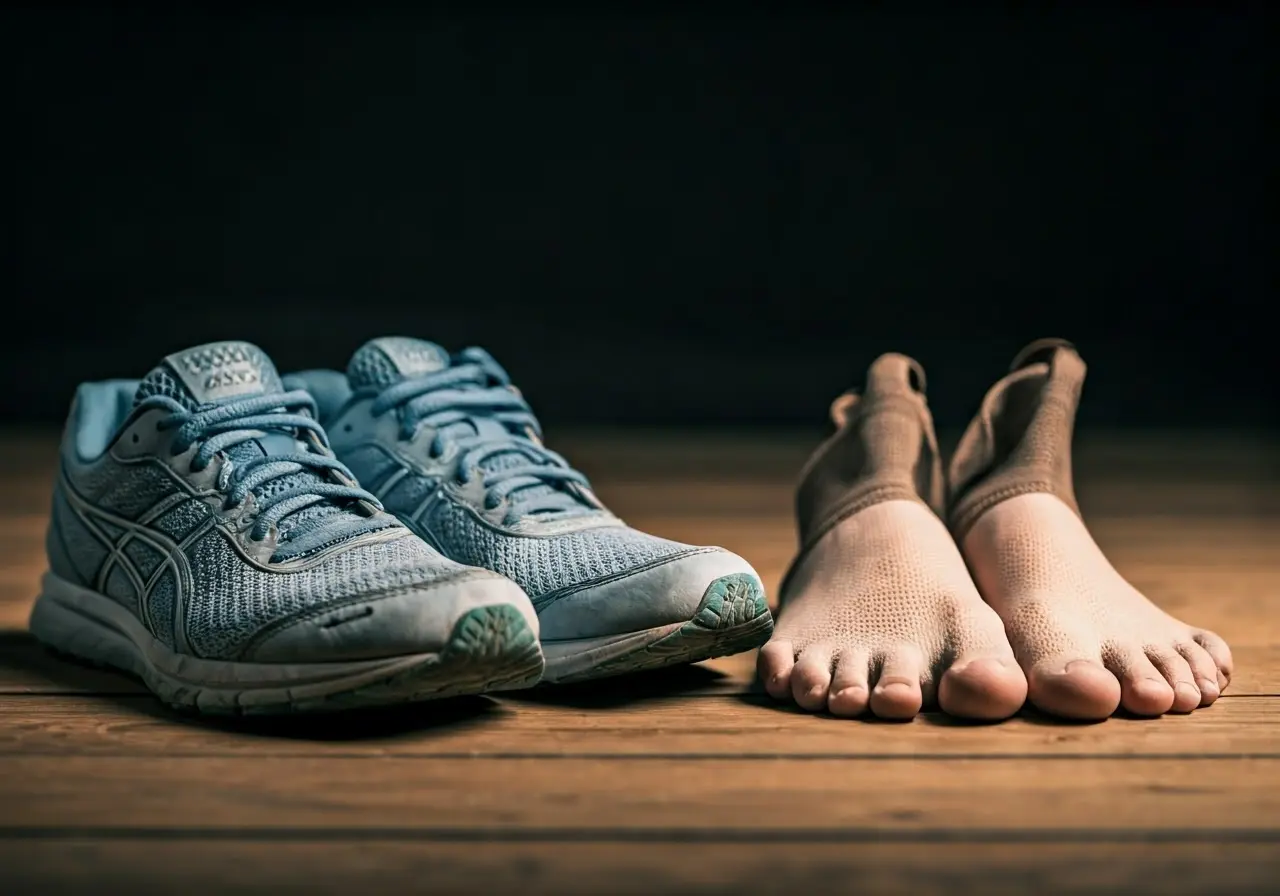
Hva er forskjellen mellom vanlige joggesko og casual barefoot shoes?
Choosing the right type of footwear can be a daunting task, especially when deciding between traditional running shoes and trendy casual barefoot shoes. In this FAQ blog, we’ll break down the differences between these two types of footwear to help you make an informed choice.
What are Traditional Running Shoes?
Traditional running shoes are designed to provide optimal support, cushioning, and stability. They often feature a significant heel-to-toe drop and are equipped with advanced materials for shock absorption. These shoes also offer various technologies to improve running efficiency, such as motion control and stability features, which are particularly beneficial for those with pronation issues.
In addition to functionality, traditional running shoes come in a variety of styles and colors, allowing athletes and casual runners alike to express their personal style while keeping comfort and performance at the forefront. This combination of aesthetics and innovation has cemented their place in the footwear market, appealing to a broad range of users.
The structure of running shoes can be crucial for those who run long distances or participate in high-intensity workouts. The durability and robust construction are tailored to withstand repetitive force and wear, making them a reliable choice for marathoners and sprinters alike.
What are Casual Barefoot Shoes?
Casual barefoot shoes aim to mimic the natural form of the foot, offering minimal cushioning and support. They have a zero drop from heel to toe, allowing for a more natural gait and closer ground contact. This design fosters a more authentic walking and running experience, encouraging the foot muscles to engage naturally.
One of the standout features of casual barefoot shoes is their lightweight design. They are often made from flexible materials that allow the foot to move freely, aligning with the body’s natural mechanics. For those who prefer a close-to-the-ground feeling, barefoot shoes provide just that, encouraging balance and proprioception.
Many people choose barefoot shoes to promote foot health, as they encourage stronger foot muscles and improved posture. The minimalistic approach of these shoes can enhance agility and responsiveness, making them a popular choice for activities like yoga, pilates, and light trail walking.
How Do They Differ in Design and Function?
While traditional running shoes focus on cushioning and stability, casual barefoot shoes prioritize flexibility and a natural foot movement. This affects how they are used and the types of activities they are suited for. For instance, traditional running shoes are often preferred for long-distance running due to their support and shock absorption.
In contrast, barefoot shoes are becoming more popular for day-to-day activities and short distance runs where the intensity and impact are lower. They encourage the wearer to adopt a forefoot or midfoot strike, potentially reducing the risk of certain injuries common in runners with a heel-strike running form.
The different designs mean that each shoe type serves a specific purpose. Traditional running shoes are technology-driven and aimed at providing performance enhancement through advances in material science, while barefoot shoes are driven by the philosophy of natural movement and minimalism.
Who Should Wear Traditional Running Shoes?
Traditional running shoes are ideal for individuals who require additional support and cushioning, particularly those who engage in high-impact activities or have specific foot health concerns. They are suitable for anyone who prioritizes protection and comfort over the sensation of barefoot walking.
For athletes experiencing flat foot issues, traditional running shoes can offer arch support and help in maintaining foot alignment, preventing pain and injury. Their comprehensive design also accommodates custom orthotic insoles, providing a tailored fit for your foot.
Who Might Benefit from Casual Barefoot Shoes?
Casual barefoot shoes are well-suited for those seeking a minimalist feel and a more natural stride. They are often chosen by people looking to strengthen their feet or who prefer a closer experience to walking barefoot. This type of shoe can be particularly advantageous for those engaging in low-impact, indoor activities.
Runners interested in transitioning to a barefoot running style might find these shoes useful for building the necessary foot and calf strength over time. The barefoot movement is gaining traction among eclectic communities, including outdoor enthusiasts and those focused on holistic wellness.
Considerations for Choosing Your Footwear
When deciding between these shoes, consider your lifestyle, the activities you engage in, and any specific foot needs. It’s essential to select footwear that aligns with your comfort and health requirements. For those uncertain about switching to barefoot shoes, a gradual introduction can help your body adapt naturally.
Remember that personal preference will play a significant role in your ultimate decision. Evaluate your goals, whether it’s enhancing your running performance or embracing a more natural walking experience. Awareness of your foot dynamics and consulting with footwear specialists can ensure a selection that facilitates your activities and lifestyle best.
Making the Right Footwear Choice
Ultimately, the choice between traditional running shoes and casual barefoot shoes comes down to personal preference and what works best for your feet and lifestyle. Whether you prioritize support, flexibility, or a more natural feel, understanding these differences can guide you in finding the perfect fit.
- Choosing a selection results in a full page refresh.
!






















































